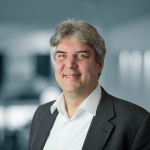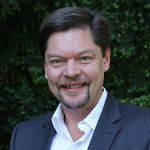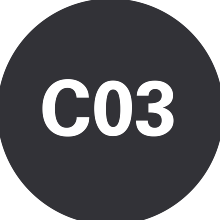Publications
Journal Articles
- Brodbeck, M., Egli, F. S., Suditsch, M., Seyedpour, S. M., & Ricken, T. (2024). On the influence of non-linearity within two-phase poro-elasticity: Numerical examples and counterexamples. Examples and Counterexamples, 6. https://doi.org/10.1016/j.exco.2024.100167
- Trivedi, Z., Wychowaniec, J. K., Gehweiler, D., Sprecher, C. M., Boger, A., Gueorguiev, B., D’Este, M., Ricken, T., & Roöhrle, O. (2024). Rheological Analysis and Evaluation of Measurement Techniques for Curing Poly (Methyl Methacrylate) Bone Cement in Vertebroplasty. ACS Biomaterials Science & Engineering, 10, Article 7. https://doi.org/10.1021/acsbiomaterials.4c00417
- Trivedi, Z., Gehweiler, D., Wychowaniec, J. K., Ricken, T., Gueorguiev, B., Wagner, A., & Röhrle, O. (2023). A continuum mechanical porous media model for vertebroplasty: Numerical simulations and experimental validation. Biomechanics and Modeling in Mechanobiology, 22, Article 4. https://doi.org/10.1007/s10237-023-01715-4
- Trivedi, Z., Gehweiler, D., Wychowaniec, J. K., Ricken, T., Gueorguiev-Rüegg, B., Wagner, A., & Röhrle, O. (2023). Analysing the bone cement flow in the injection apparatus during vertebroplasty. Proceedings in Applied Mathematics and Mechanics, 23. https://doi.org/10.1002/pamm.202200295
- Völter, J.-S. L., Ricken, T., & Röhrle, O. (2023). About the applicability of the theory of porous media for the modelling of non-isothermal material injection into porous structures. Proceedings in Applied Mathematics and Mechanics, 23. https://doi.org/10.1002/pamm.202200070
- Seyedpour, S. M., Valizadeh, I., Kirmizakis, P., Doherty, R., & Ricken, T. (2021). Optimization of the Groundwater Remediation Process Using a Coupled Genetic Algorithm-Finite Difference Method. Water, 13. https://doi.org/10.3390/w13030383
- Trivedi, Z., Bleiler, C., Gehweiler, D., Gueorguiev-Rüegg, B., Ricken, T., Wagner, A., & Röhrle, O. (2021). Simulating vertebroplasty: A biomechanical challenge. Proceedings in Applied Mathematics and Mechanics, 20. https://doi.org/10.1002/pamm.202000313
- Wagner, A., Eggenweiler, E., Weinhardt, F., Trivedi, Z., Krach, D., Lohrmann, C., Jain, K., Karadimitriou, N., Bringedal, C., Voland, P., Holm, C., Class, H., Steeb, H., & Rybak, I. (2021). Permeability Estimation of Regular Porous Structures: A Benchmark for Comparison of Methods. Transport in Porous Media, 138, 1–23. https://doi.org/10.1007/s11242-021-01586-2
- Trivedi, Z., Bleiler, C., Wagner, A., & Röhrle, O. (2019). A parametric permeability study for a simplified vertebra based on regular microstructures. Proceedings in Applied Mathematics and Mechanics, 19. https://doi.org/10.1002/pamm.201900383
Published data sets
- Trivedi, Z., Wychowaniec, J. K., Gehweiler, D., Sprecher, C. M., Boger, A., Gueorguiev, B., D’Este, M., Ricken, T., & Röhrle, O. (2024). Data for: Rheological Analysis and Evaluation of Measurement Techniques for the Curing Polymethylmethacrylate Bone Cement in Vertebroplasty [DaRUS]. https://doi.org/10.18419/DARUS-4004
- Trivedi, Z., Gehweiler, D., Wychowaniec, J., Ricken, T., Gueorguiev, B., Wagner, A., & Röhrle, O. (2022). Data for: A continuum mechanical porous media model for simulating vertebroplasty: Numerical simulations and experimental validation [DaRUS]. https://doi.org/10.18419/DARUS-3146
Research
About this Project
Percutaneous vertebroplasty is a medical procedure for treating weakened or fractured vertebrae. In this procedure, bone cement (a form of the polymer polymethyl methacrylate) is injected inside the cancellous part of the vertebra, also called spongy bone due to its porous nature. The bone cement restores the mechanical strength of the vertebra as it cures, thus stabilising the vertebral column. However, complications can arise if the bone cement leaks outside the vertebra during injection. We want to prevent such cases by simulating vertebroplasty using computational models. Such a simulation can be used as a tool by practitioners to decide the operating parameters for each specific patient to achieve optimum filling of bone cement, without resulting into leakages.
Results
Funding Period 1
In the first funding phase, we developed a consistent theoretical model based on the principles of the Theory of Porous Media and, subsequently, a consistent in-silico model enabling the simulation of bone cement injection. Our model considers pore-scale information to obtain realistic macro-mechanical parameters such as the permeability of the solid structure. We compared different approaches for permeability estimation in a benchmark study which was a joint effort with projects A03, A05, B02, B05, C01 and C04. Furthermore, our model considers the complex rheology of the bone cement, which we have investigated experimentally. We have validated our model of the bone cement rheology by means of injection experiments into artificial porous structures, which were recorded by means of computed tomography (see Figure 1). The development and improvement of the underlying in-silico model was continued in the second funding phase.
Funding Period 2
In the second funding phase, we considered multiple research questions. First, we investigated the importance of the interface between bone, bone cement and bone marrow toward the prediction of the bone cement distribution after cement injection (see Figure 2). We find that the injection process is dominated by viscous forces entirely. In particular, capillary forces are negligible such that our application of material injection is not interface-driven.
Continuing, we have extended our model to be able to account for all aspects of the curing process occurring within the bone cement during and after the injection. In particular, we developed constitutive models with which the curing-driven evolution of the cement’s viscosity is described naturally (see Figure 3). Using the same model, the release of heat due to the exothermic curing process is captured (see Figure 4).
Toward investigating the reliability of predictions to be made using our model within the context of the clinical use case, wherein patient-specific parameters have to be considered, we developed a methodology and workflow for analysing vertebroplasty simulations, emphasising a structured approach for assessing computationally expensive models (see Figure 5).
Future Work
In the future, we want to transfer our experience and the results of our research within project C03 toward the development of an educational tool, enabling the training of surgeons for vertebroplasty procedures with minimal X-ray exposure. In particular, we want to leverage the previous work of the AO Research Institute, which developed an educational tool for training surgeons, the so-called „Digitally Enhanced Surgical Trainer“ (DEHST).
International Cooperation
AO Research Institute (ARI), Davos
The group of Oliver Röhrle and the group of Boyko Gueorguiev-Rüegg at the AO Research Institute (ARI) at Davos have had a long-lasting collaboration. In particular in the field of vertebroplasty, this collaborative research has led to joint publications. Boyko Gueorguiev-Rüegg and his group from the ARI provide assistance in interpreting and validating the proposed computational models, in particular with respect to clinical relevance and significantly contribute with their expertise in publishing experimentally related research. This includes rheological characterisation of medical-standard bone cements and injection experiments to capture the filling behaviour of bone cement using dynamic-CT imaging. The experimental work conducted at the ARI provides the basis for some of the simulations related to the validation of the pore and REV scale models of Research Project C03 as well as laying out future research potential of investigating the injection process into fractured vertebrae.
For further information please contact

Oliver Röhrle
Prof. PhDProject Leader, Research Project C03

Tim Ricken
Prof. Dr.-Ing.Project Leader, Research Project C03







